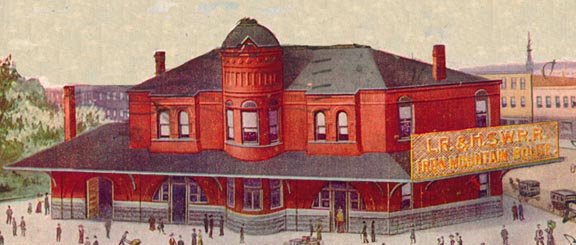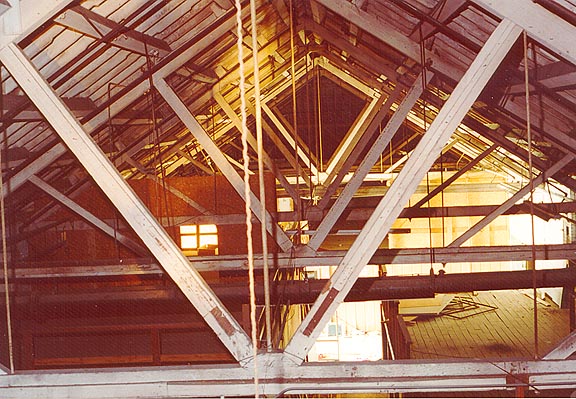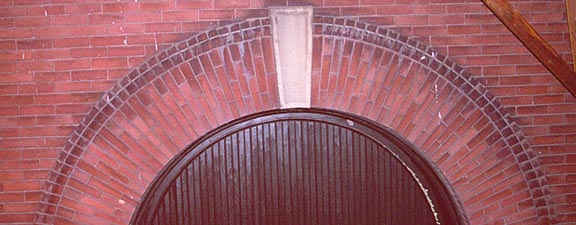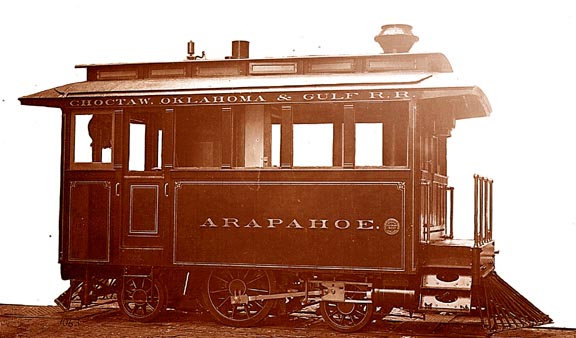 |

|
of the Choctaw Terminal
Charles W. Clark
In early December, 1899, Clark received another station contract, for the Little Rock & Hot Springs Western depot in Hot Springs. The artist's rendition of that structure (below) contains numerous architectural details that are similar to those found in the Choctaw station. The LR&HSW depot burned in the disastrous fire which destroyed much of downtown Hot Springs in 1913.

George W. Donaghey
Donaghey's general area of responsibility, as a railroad contractor, involved wood structures. It is probable that he served as a subcontractor on the Choctaw freight station, providing the expertise and crews to erect the 40-foot beams and other framework which support the roof over the freight warehouse.

Donaghey continued to work with CO&G officials until those officials were displaced as a result of the Rock Island takeover, then continued the railroad contractor association when former CO&G officials and investors built the Midland Valley Railroad from Hartford and Fort Smith through Muskogee to Wichita. Donaghey's success as a railroad contractor, along with other related efforts, helped to make him a wealthy man. After completion of the Midland Valley, he turned his attention to the Arkansas state capitol construction, which had drawn much criticism for waste, corruption and delay. Using this issue, and his experience as a businessman, Donaghey was elected Governor of Arkansas, serving two terms 1909-1912.
The Workers
Their obvious pride in workmanship is evident upon detailed examination of the brick and stonework. Note the extremely thin mortar joints in the quoins bordering the main entry, and the perfect placement and thin mortar around the voussoirs, the wedge shaped bricks which were hand trimmed to construct the true arches over windows and doorways. Today, even when a keystone is present, arches are formed in a much more crude design using same-size brick with large, irregular mortar joints to compensate for proper arch curvature. Brickwork of the calibre seen on the Choctaw freight station, combined with the premium quality of brick used, is a now a vanished art form.

F.A. Molitor
 During the design and construction of the Little Rock passenger and freight stations, Molitor was determined that these structures, the most substantial brick buildings on the entire Choctaw Route, would be impressive representatives of the new railroad in Little Rock. These "flagship" structures also made a profound statement about the CO&G's belief in the future of Little Rock, and the railroad's determination to serve Arkansas' capitol city in a substantial manner and with more flair than had been exhibited by Gould's Iron Mountain route. The success of Molitor's efforts are quite apparent even today, 102 years later.
Return to history text.
|